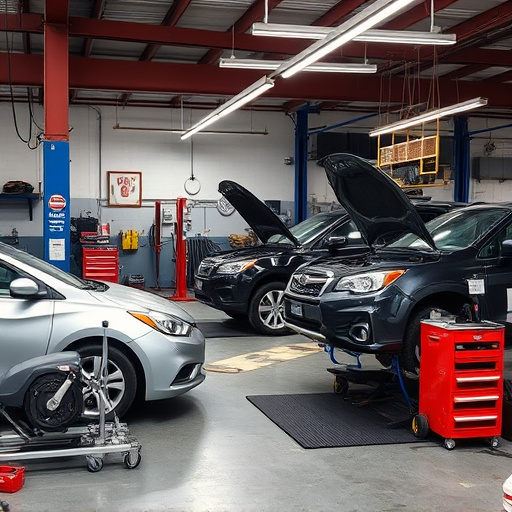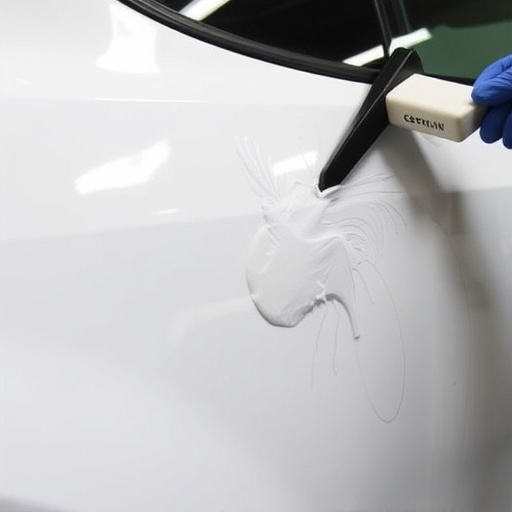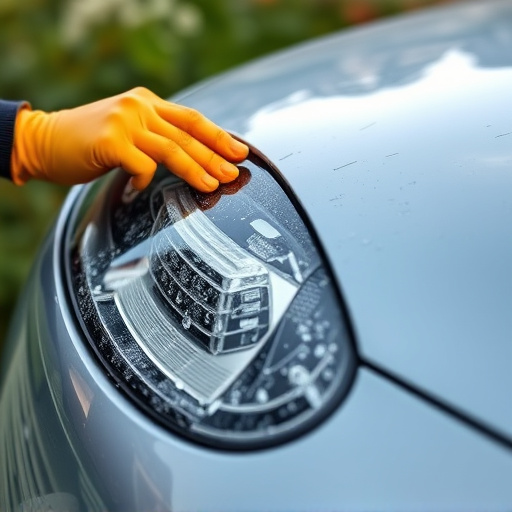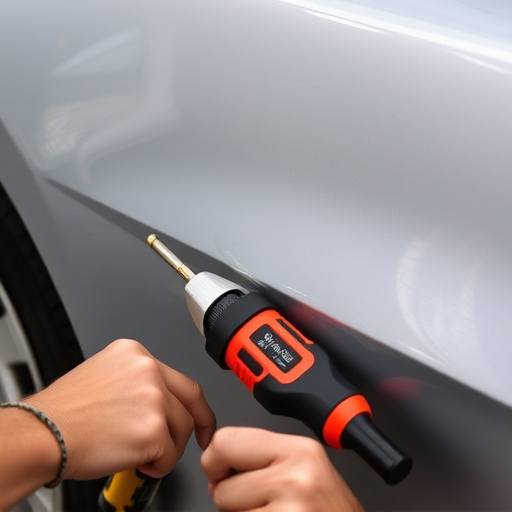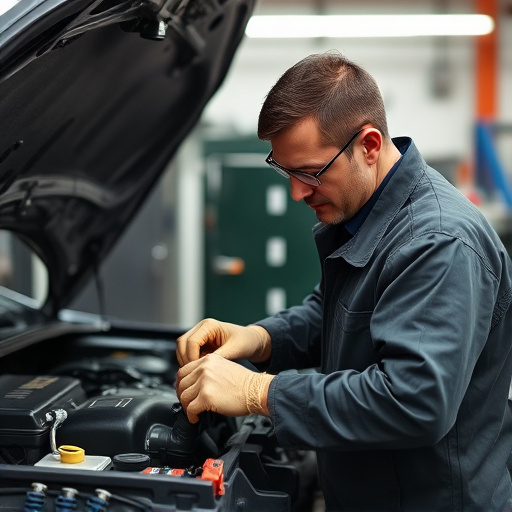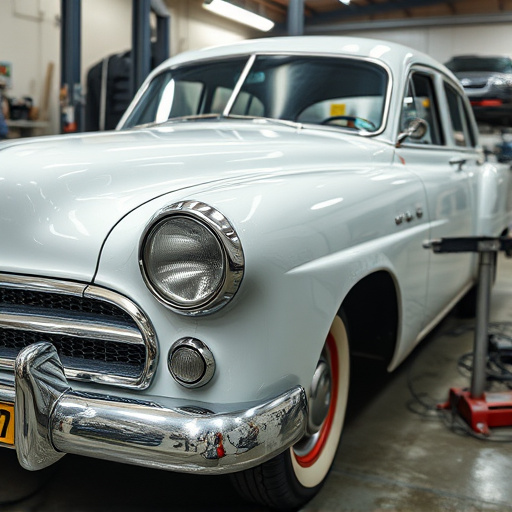Safety glass replacement is a critical process for car safety, involving high-quality impact-resistant materials that meet stringent standards. It includes various types like tempered and laminated glass, each with unique breaking characteristics. Beyond window repair, it encompasses bumper repair and painting to ensure structural integrity and aesthetics. Rigorous safety testing simulates impact scenarios to certify glass meets protection standards, emphasizing the importance of quality assurance for vehicle occupant safety. A comprehensive guide ensures proper material selection to installation, promoting reliable and visually appealing replacements that offer drivers peace of mind.
Safety glass replacement is a critical process that ensures the integrity and durability of windows and doors. As buildings become more energy-efficient, understanding the role of safety testing in certification is paramount. This article delves into the fundamentals of safety glass replacement, highlights why rigorous safety testing is essential for certification, and provides a comprehensive guide to the procedures involved. By exploring these aspects, we aim to emphasize the significance of safety testing in ensuring the quality and reliability of replacement components.
- Understanding Safety Glass Replacement: The Basics
- Why Safety Testing is Crucial for Certification
- Comprehensive Guide to Safety Testing Procedures
Understanding Safety Glass Replacement: The Basics

Safety glass replacement is a critical process that ensures the integrity and safety of automotive windows. It involves the meticulous substitution of broken or damaged glass with high-quality, impact-resistant materials designed to meet specific safety standards. This procedure is not merely about installing a new piece of glass; it’s about enhancing vehicle safety, particularly in the event of a collision. The primary goal is to prevent the spread of shattering glass, which can cause severe injuries, and instead contain the glass within the frame, providing a safer environment for occupants.
Understanding the fundamentals of safety glass replacement is crucial for both vehicle owners and professionals in the automotive industry. This includes recognizing the different types of safety glass, such as tempered and laminated glass, each with its unique properties. For instance, tempered glass, when broken, shatters into small, non-sharp pieces, whereas laminated glass remains intact during impact, bonding the broken pieces together to prevent them from flying around. Moreover, this process encompasses not just car windows but also involves tasks like bumper repair and auto painting, ensuring that the replacement is seamlessly integrated with the vehicle’s overall structure and aesthetics.
Why Safety Testing is Crucial for Certification
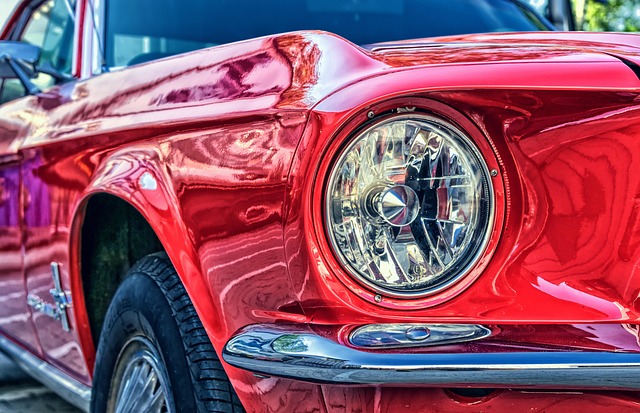
Safety testing plays an indispensable role in the certification process for safety glass replacement. In the realm of automotive collision repair and car body repair, ensuring that replacement parts meet stringent safety standards is paramount. Safety glass, designed to protect occupants during accidents, must undergo rigorous assessments to verify its integrity and performance. These tests simulate various impact scenarios, scrutinizing the glass’s resistance to shattering and its ability to minimize the risk of injury.
For instance, auto maintenance professionals conduct tests that replicate side-impact collisions or severe weather conditions, emphasizing the importance of safety testing in mitigating potential hazards. The results of these evaluations directly influence whether a specific safety glass replacement is deemed fit for certification, ultimately contributing to the overall safety and well-being of vehicle occupants.
Comprehensive Guide to Safety Testing Procedures

When it comes to safety glass replacement, a comprehensive guide to safety testing procedures is an indispensable tool for any auto collision center or car repair service. This process ensures that new windows and glass components meet stringent industry standards, providing drivers with enhanced safety during operation. Safety testing involves rigorous checks to verify the structural integrity, impact resistance, and adherence to relevant regulations, such as those set by vehicle manufacturers.
The guide outlines detailed steps for evaluating each component, from initial material selection to final installation. It delves into various tests like impact resistance assessments, pressure tests, and visual inspections to identify any flaws or weaknesses. By adhering to these procedures, auto frame repair experts can guarantee that replacement glass is not just visually appealing but also safe and reliable. This is particularly crucial for drivers’ peace of mind on the road, knowing their vehicle’s windows are built to withstand unexpected incidents, be it a minor fender bender at an auto collision center or a sudden gust of wind during a car repair service visit.
Safety testing plays a pivotal role in the certification process for safety glass replacement, ensuring that only high-quality and reliable products reach the market. By meticulously evaluating various aspects of the replacement glass, these tests verify compliance with industry standards, ultimately safeguarding users and enhancing building safety. A comprehensive understanding of safety glass replacement and adherence to rigorous testing procedures are essential steps in promoting structural integrity and peace of mind.


